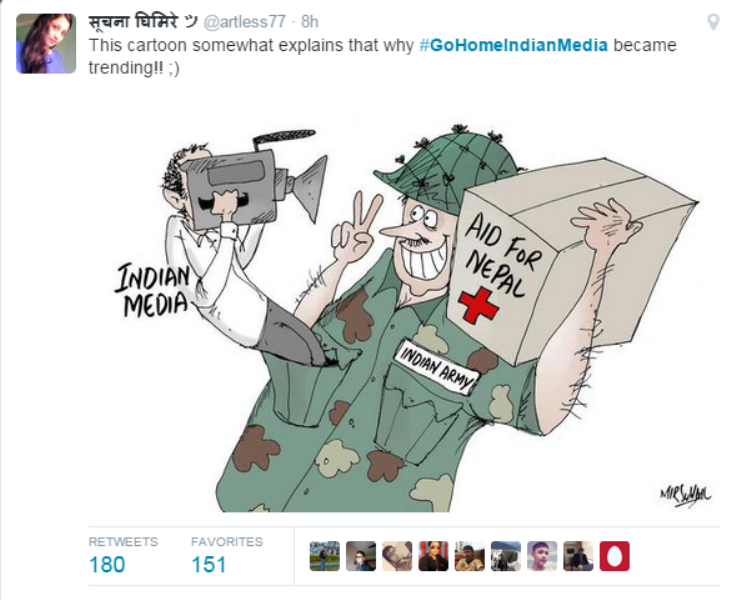
If the Indian army brought laurels to the country by doing a great job in spearheading the relief work for earthquake struck Nepal, the
Otherwise, what else can justify the rapid popularity of #GoHomeIndiaMedia, which is nothing but a testimony to the outrage by millions of people which includes both Nepalese and Indians against the Indian media coverage of the devastating Nepal quake?
The extensive coverage of the earthquake and the aftermath of it by the Indian news channels have only raised one question about this fraternity--- In the race to get exclusive pictures or soundbytes for their respective organisations, did Indian journalists forget their basic sense of ethics? In her open letter to the Indian media, Nepali writer Sunita Shakya clearly called the Indian coverage of the disaster struck Nepal as ‘shooting some kind of family serials’.
“There has been one viral news report going on where a reporter presented how people were fighting for food and one woman got injured badly. Thanks to the reporter, who had enough time to grab the victim and bring to the camera to show the victim hurt badly on her head. But how surprising, he did not have a minute to grab a piece of cloth to stop bleeding! That reporter did not have a minute to grab the wrist of that person who was beating others with a helmet. There was of course a cameraman who does not want to miss a second so that a dramatic news could be presented. I think you are a human before you become a media person. As a responsible person, it was your duty to save someone,” writes an agitated Shakya.
Next she points out that an Indian journalist, in his bid to get exclusive information about the work (read great) that India was doing in the country, also hampered the on-going relief work, when he asked one of the rescue workers about the kind of technology that has been used. Really, do we have no sense of time or situation? In our attempt to be number one, did we really forget that with every passing second, there is a life lost—maybe a doting father or mother, a wife or a husband and the worse—a child!
The coverage of
It’s truly a shame that on World’s Press Freedom Day, Indian press was being slammed on
Veteran journalist and Editor-in-chief of NDTV, Dr Prannoy Roy in his piece, Tabloidization of Indian News, notes that ‘Tabloidization is the death of good journalism’.
He talks about applying the Heisenberg principle of quantum mechanics in journalism. “For the second point, I like to use a phrase…it's called the "Heisenberg principle of journalism. The 'Heisenberg principle of journalism' states that if you head towards the sole objective of eyeballs or sensationalism, the very nature of your own journalists and journalism tends to change. Also it is well known that if a journalist gets too close to her or his sources, the nature of the news changes - some call it quid-pro-quo journalism.
Our coverage of the Nepal disaster is definitely a cue for us to universally adopt Dr. Roy’s Heisenberg Principle of Journalism as the Kotler’s 4 Ps, governing the rules of journalism.
